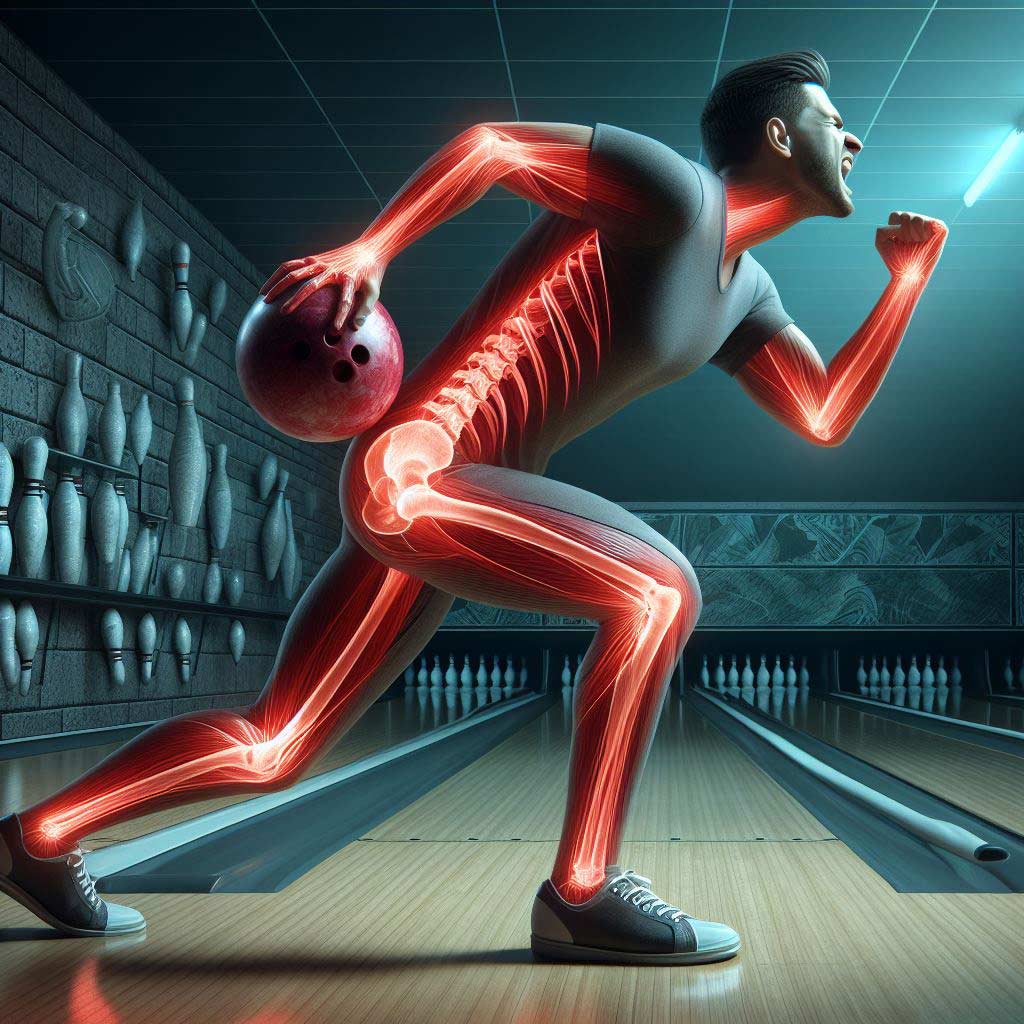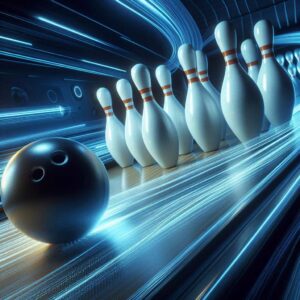Bowling is a beloved sport that people of all ages and abilities enjoy. It’s a classic game for both casual weekend fun and competitive league play. But if you’re new to bowling or haven’t played in a while, you may be wondering – can bowling actually make you sore?
The answer is yes, bowling can definitely make your body sore, especially if you aren’t used to the motions involved. From the swing of the ball to the release down the lane, bowling uses a very specific set of muscles and techniques. Improper form or overdoing it can lead to aches and pains in the hours or days afterwards.
In this article, we’ll break down exactly why and how bowling can make you sore. We’ll look at the muscle groups utilized in bowling, proper bowling techniques, and ways to help prevent and treat bowling-related soreness.
Muscle Groups Used in Bowling
Bowling may seem simple on the surface, but it requires coordinated muscle strength and movements to perform optimally. Here are some of the major muscle groups engaged when you bowl:
- Legs – Your legs provide stability and power as you approach the foul line. The quadriceps straighten the knee for the penultimate step, while the glutes and hamstrings contract to start the swing. The slide leg also controls balance and alignment.
- Core – Your abdominal core muscles stabilize your upper body during the bowling motion. As you swing the ball back, the obliques turn the torso while maintaining spine alignment.
- Back – The erector spinal muscles of the lower back contract to lift the ball during the backswing. They stabilize the spine to avoid rounding or arching.
- Shoulders – The deltoid muscles lift the upper arm to increase the backswing height. The rotator cuff stabilizes the shoulder joint throughout the swinging motion.
- Forearms and Wrists – The forearm flexors help lift and control the ball. Meanwhile, the wrist stabilizers and flexors provide finesse and support during the ball release.
As you can see, bowling utilizes a whole kinetic chain of muscles from your lower body to your upper extremities. Many muscle groups are engaged at the same time to control, lift, and propel the ball. This coordination is crucial for accuracy as well as injury prevention.
Common Sore Spots from Bowling
Due to the full-body nature of bowling, you may notice soreness in several spots after a session. Here are some of the most common areas that can get sore or injured from bowling:
- Lower Back – The erector spinal muscles of the lower back contract forcefully to lift the ball during the backswing. If you round your back and don’t keep it straight, you can overwork these muscles and cause next-day soreness.
- Bowling Shoulder – The shoulder of your dominant bowling arm undergoes repetitive overhead motions. This can irritate the rotator cuff tendons or deltoid muscles, especially if using improper form.
- Bowling Arm – The biceps and triceps muscles of your bowling arm are working to lift and control the ball. Excessive hook shots or throwing the ball too forcefully can strain the elbow joint and forearm muscles, causing soreness.
- Bowling Wrist – The wrist is vital for aiming and ball release. However, gripping the ball too tightly or incorrectly can hyperextend the wrist joint and cause pain in the surrounding tendons.
- Thighs – The quadriceps and hamstrings provide explosive power as you stride forward. Overdoing it can make it hard to walk the next day!
- Core Muscles – The obliques, transverse abdominis, rectus abdominis, and erector spine are all active during bowling to rotate and stabilize your torso. Poor technique strains these muscles over time.
As a beginner, it’s normal to feel some delayed onset muscle soreness in these areas as your body adjusts to the new motions and resistance. But pain and soreness after bowling also signals that something needs addressed in your bowling form or conditioning.
Bowling Techniques that Increase Soreness
Improper bowling form is often the culprit behind a sore back or shoulders after bowling. Not maintaining proper spine alignment, gripping the ball incorrectly or attempting advanced moves before you’re ready can exacerbate pain and increase injury risk.
Here are some common bowling mistakes that can lead to undue soreness:
- Incorrect Stance – Standing off-balance or not evenly distributing weight puts strain on muscles to overcompensate. This leads to fatigue and next day soreness.
- Rounded Back Swing – Letting your back round as you bring the ball back puts an unhealthy strain on the spine. This can tweak muscles and cause immediate or delayed pain.
- Tight Grip – Holding the ball too tightly increases wrist, elbow, and shoulder tension. This can cause tendonitis and impede swing fluidity.
- Aggressive Swing – Heaving the ball with all your might seems like the best way to knock down pins. But it overtaxes muscles and leads to microtears.
- Excessive Hook – Putting a heavy sidespin on the ball looks pro but requires immense shoulder rotation and control. This move is advanced and can irritate the back and bowling arm.
- No Follow Through – Neglecting to follow through fully after ball release makes it hard to balance and absorb shock. This jars the back and legs.
Bowling for prolonged periods without breaks, using the wrong ball weight, and attempting advanced moves before developing sound mechanics are other reasons bowling can make you sore. Take it slow as you build bowling skills.
The Importance of Warming Up
Stretching and properly warming up the muscles is incredibly important for injury prevention and performance in any exercise or sport, including bowling. Here’s what a brief pre-bowling warm-up routine should include:
- Low-Intensity Cardio – 5-10 minutes of light jogging or exercise bike gets the blood pumping to muscles.
- Arm Circles – Small and big clockwise and counterclockwise arm circles mobilize the shoulders.
- Torso Twists – Twisting gently side to side warms up the core and back muscles.
- Neck Stretches – Gently tilt and turn the neck to warm up cervical vertebrae. Avoid overstretching.
- Quad Stretches – Holding the top of the ankle behind you stretches the front thighs.
- Hamstring Stretches – Extending one leg forward and leaning down stretches the back of the thigh.
- Wrist Stretches – Gently flexing hand up and down stretches wrist extensors and flexors.
- Shoulder Stretches – Lacing fingers behind back, draw shoulders down and together.
Five to ten minutes of full body stretching and a light range of motion prepare muscles for the workout ahead. This prevents injury, builds coordination, and sets you up for your best performance. Don’t neglect the warm-up!
Proper Bowling Form and Technique
In addition to warming up, utilizing proper bowling form and technique is key for avoiding undue muscle damage and soreness. Here are some tips:
- Relaxed Grip – Hold the ball lightly with your fingertips. Avoid squeezing tightly or grasping holes palm down.
- Balanced Stance – Feet shoulder width apart, evenly distributed weight. Knees slightly bent provide stability.
- Controlled Backswing – Hinging slightly from the hips, bring the ball straight back with control. Keep back flat.
- Full Follow Through – Allow momentum to swing arm forward completely after ball release. Step forward smoothly.
- Fluid Release – Uncurl fingers and thumb to release. Aim for a straight trajectory down the lane. Minimize sidespin.
- Take Breaks – Sit out a round every few turns to give muscles a chance to recover. Hydrate as well.
- Use Lighter Ball – Opt for a 6-10 lb house ball to reduce strain as you learn. Work up slowly in ball weight.
Having strong technique is just as important as strength for avoiding soreness in bowling. Be patient as you develop coordination and don’t overdo distances, weights or play durations.
Preventing and Treating Bowling-Related Soreness
It’s normal to feel some muscle soreness as you learn a new sport like bowling. But you can take proactive steps to prevent excessive pain and speed up recovery between sessions:
- Warm up before bowling and stretch thoroughly afterward. This preps muscles and returns them to normal length.
- Ice sore spots for 15-20 minutes after activity to reduce inflammation.
- Use OTC anti-inflammatory medication as needed for 1-2 days after intense bowling.
- Consider sports massage to release tight muscles and address trigger points.
- Strengthen core muscles with planks, bridges, and Pallof presses.
- Stretch and strengthen shoulders with band pull-aparts and external rotations.
- Stay well hydrated before, during, and after bowling.
- Allow 48 hours between bowling sessions for full muscle recovery.
- Listen to your body – take more rest days if needed.
- Improve form with coaching to prevent repetitive strain.
- Wear knee braces or back supports if you have existing joint issues.
Be patient with your body as you build bowling fitness. Use appropriate balls, pace yourself, and take breaks. Proper preparation, technique, rest, and nutrition will keep soreness to a minimum and allow you to enjoy bowling at your best.
The Bottom Line on Bowling and Soreness
Bowling undoubtedly requires specialized movements and strength from head to toe. Therefore, feeling some degree of muscle soreness, especially after picking up a bowling ball for the first time in a while, is very normal and to be expected.
The keys are using proper form to avoid injury, warming up adequately before playing, pacing yourself, taking breaks, and allowing your body time to recover between sessions. With patience and practice, bowling can become an enjoyable activity that keeps you fit and active with minimal aches and pains.
Try not to bowl excessively long durations your first few times out. Give your muscles, tendons and joints time to adapt to the bowling motions. You can build up your endurance and handle heavier bowling balls over time. Proper technique and control is more important early on than sheer strength or speed.
If pain persists for many days or inhibits movement, be sure to consult a physical therapist or sports medicine physician. They can assess your condition, provide treatment and help correct any bowlingform issues.
With the right precautions and preparation, bowling can be an incredibly fun sport that provides great low-impact exercise. Don’t let worries of being sore deter you from trying it out.
Just be sure to warm up adequately beforehand and slowly work your way up in terms of duration and intensity. Pay attention to muscle fatigue so you don’t overdo it early on. Proper bowling form aligned with your physical strength and fitness levels will keep you rolling pain-free game after game.
Frequently Asked Questions
Is it normal to be sore after bowling?
Yes, it’s very normal to feel some muscle soreness after bowling, especially if you are new to the sport or haven’t played in a long time. Bowling uses several muscle groups in the legs, core, back, shoulders and arms that can become strained from the repetitive motions required.
Can bowling cause muscle strain?
Improper bowling form or technique can definitely lead to muscle strains or tightness in areas like the lower back, thighs, shoulders and forearms. Common bowling injuries include back muscle strains, rotator cuff tendonitis and wrist sprains.
Does bowling give you muscles?
Bowling can help build and tone some muscles over time through the resistance required to lift and control the bowling ball. It especially targets the core, legs, shoulders and arms. However, bowling alone is not enough for major muscle growth – strength training is also required.
Why do my legs hurt after bowling?
It’s common for the quadriceps, hamstrings and glutes to feel sore after bowling due to the leg drive required during the approach and release. Improper balance can also overwork the stabilizing muscles. Make sure to stretch the legs after bowling.
How do you not get sore from bowling?
Warming up properly, using correct form, taking breaks, bowling lighter games, staying hydrated, using lighter balls and stretching afterwards will help prevent excessive bowling soreness. Building strength in core and arms also helps reduce strain.
What helps with pain after bowling?
Stretching, icing sore spots, OTC anti-inflammatories, Epsom salt soaks, massage, and avoiding bowling again until pain subsides can help manage pain after bowling. Avoid activities that aggravate sore muscles.
What is the most common bowling injury?
Lower back pain and strain is one of the most frequently reported bowling injuries. This results from improper spine alignment, rounding the back, not warming up adequately, or attempting to lift too heavy of a ball during the backswing.
What muscles do you work when you bowl?
Bowling engages muscles of the legs, glutes, core abdominal muscles, lower back, shoulders, biceps, triceps, and forearms. The entire kinetic chain has to work in coordination.
Can you pull a muscle in your leg from bowling?
Yes, the quadriceps and hamstrings are actively engaged to propel your body forward during the bowling approach. Not warming up properly or overdoing the leg drive can definitely cause strains in the thigh muscles.





